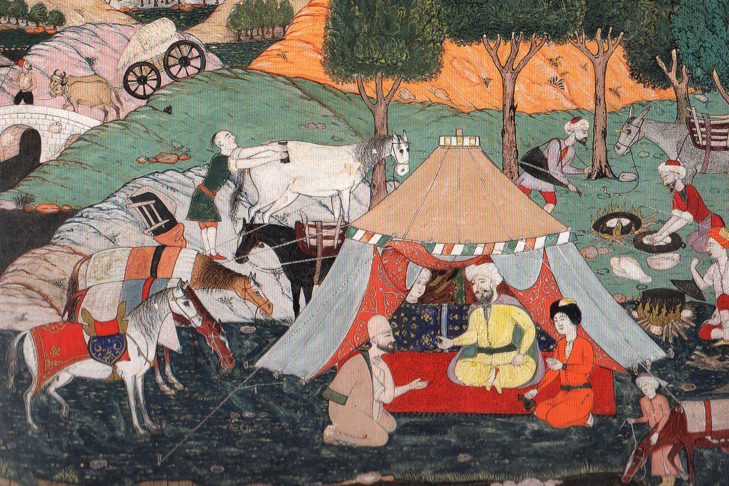Evliya Çelebi travelled on horseback. The EÇW is envisaged first and foremost as an opportunity to experience the varied Turkish landscape and its cultural heritage in the way that he and his companions would have done.
Evliya Çelebi was very aware of the realities of being on the road for days on end, and supplied information about time and direction of travel between the places he visited, as well as simple descriptions of the terrain he crossed. When leaving one place for the next he indicated the direction in which he set out, and the number of hours to the next place he came to.
Existing compilations of historical travellers’ routes in Anatolia indicate that most segments of the route followed by Evliya Çelebi on this journey were distinct from the well-worn routes followed by other, western travellers. We might assume that he had a curiosity about life away from the towns that they did not share—and this also makes him a compelling and distinctively Ottoman figure.
This first instalment of the EÇW begins in Hersek and ends in Simav. From the southern shore of the Gulf of Izmit its riders head towards Bursa via Iznik, followed by Inegöl-Kütahya-Afyon-Banaz-Ovacık-Uşak-Gediz-Simav. Most significantly, this route follows Evliya’s circuitous method of travelling and criss-crosses the rarely-visited countryside between these towns. Modern routes take the easy way, through the valleys where possible, while Evliya Çelebi roamed at whim, through what is, for the most part, still open country today. Suitable for riders or walkers, it is not a route intended for mass tourism, and will therefore have only beneficial impact on the countryside and people along the way. By the same token, it will require only a minimum of administration and maintenance once established.

